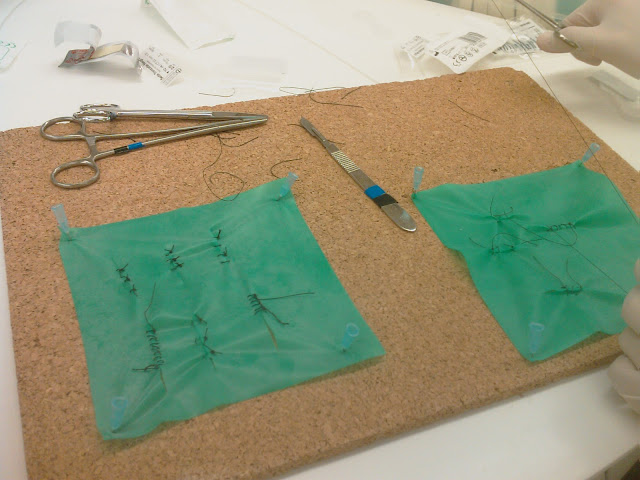It's been a long time since my last post, I've been with exams but we restarted classes on monday so today I wanted to talk about one of our cases at the clinic. My partner and I we had this case as a first visit. The patient is a 38 years old women.
How do we start the first visit? What we usually do is the questions to the patient. We need to know:
- Visit reason: she wanted a revision.
- Personal medical history: no interest
- Family history: her father had angina pectoris, myocardial infarction and stomach ulcers. Her mother also had a heart desease.
- Medication: occasional medication for headaches - ibuporfen.
- Periodontal status: severe probing with <6mm of widespread
- Bad habits: smoking of 2 packs (40 units aprox.)
- Last dentist visit: 4 years ago.
- Oral higiene: 2 times a day, very suspicious.
- Alergies: no interest.
After all the history we have to determine a presumptive diagnosis. We took some XR how we could:
1. Bitewing of the Right side:
2. Bitewing of the Left side:
3. Periapical of the antero-supeior sector:
4. As we observe a bad general status we decide to take a Orthopantomography (OPG)
Presumptive Diagnosis:
- Severe generalised calculus
- Root fragments: 1.8, 1.5, 2.8, 3.6 and 4.6 (International)
- Cavities: 3.7 and 2.2
- Fracture: crown fracture on 4.5
- partial edentulism: 1.6, 2.6 and 3.5
- Anterio-superior crowns on 1.2, 1.1, 2.1 and 2.2 in bad status.
- 2.2 has to be evaluated with all the anterior sector because the crown seems to be fractures and is not restorable.
- Occasional radiographic founds: radiopacity on 4.8 (posible cementoma).
Treatment plan:
- Hygienic phase: remove all the calculus
- Surgical phase: extracting root remnants
- Restorative phase: 4.5 and 3.7.
- Master of aesthetic and prosthetic phase: antero-superior sector (2.2 is the most important).
Actuality: We did the hygienic phase and I remove the cavity on 3.7. Now we just need the patient's effort for all the other treatment. I'm on 3rd year so here is where is our work: first visit and diagnosis, higiene and small cavities.
















